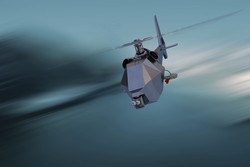Novel fuel cells create a new era for unmanned aircraft
The SUAV(opens in new window) (Microtubular solid oxide fuel cell power system development and integration into a mini-UAV) project was launched in support of the European Clean Sky initiative. It targeted the development of fuel cell components at an economic price, thereby allowing solid oxide fuel cells (SOFCs) to be used in portable and other applications. SUAV focused on the design of SOFCs with a tubular geometry and their integration in a hybrid power system comprising the microtubular SOFC stack and a battery. Tubular designs are advantageous because it is much easier to seal air from the fuel. A major challenge during the design of the integrated fuel processor and the fuel cell stack was the weight and volume demands imposed by the UAV system. To this end, project partners targeted the design of a lightweight, compact and flexible power generator. This hybrid system’s development included a microtubular SOFC, a battery, a processor for generating reformate gas and other equipment. SUAV used propane as a fuel because it contains more energy compared to hydrogen and is also available throughout Europe. Fuel cell types such as SOFCs are used since they can convert reformate gases to electricity, as opposed to other types of fuel cells that require pure hydrogen. This in turn reduces complexity and size of the fuel processor. Modelling of the SOFC stack as well as the balance-of-plant components accompanied the development of the single components of the power generator. Based on this, 2D and 3D computational fluid dynamics models were developed to predict temperature distributions within each microtubular cell and the complete stack, where thermal stresses were also computed. due to the stringent requirements on volume and weight, project members used catalytic partial oxidation as a reforming technique. Although it has lower efficiency than steam reforming, it results in a higher power output per volume and weight as it does not require water. SUAV’s legacy is a 280 W fuel cell generator with prolonged flight mission capabilities. Besides aerospace applications, the developed technology can also find use in portable power supplies, on-board vehicle power and educational demonstrators. Amongst other benefits, this could enable longer flight times for detecting wildfires.







